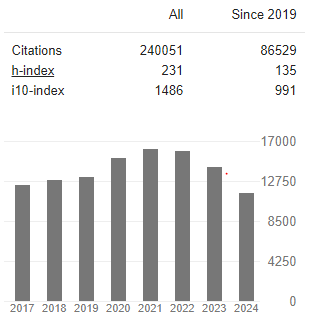High Dose Rate Endobronchial Brachytherapy: Our institutional experience as an Effective Palliative Treatment Modality in Bronchial Carcinoma
Abstract
Jigna Bhattacharya, R K Vyas, Saheli Saha, U Suryanarayan, Ankita Parikh, Satish Palgade, Parthiv Mehta
Background: Treatment of inoperable carcinoma lung poses a challenge both due to the magnitude and local symptoms with resultant worsening of performance status of the patients. Endobronchial brachytherapy is an established modality for palliation of symptoms, namely dyspnoea, haemoptysis and coughthat result from disease infiltration of the airways. This study was aimed at evaluating the role of HDR endobronchial brachytherapy with external radiotherapy for symptomatic improvement and compliance for such patients at our institution.
Method: 50 patients of inoperable Ca Lung with significant bronchial component, includingnon-small cell and small cell, were assessed. Patients were evaluated with fibre optic bronchoscopy regarding degree of bronchial obstruction. They were randomized into two treatment arms, Arm A: Endobronchial brachytherapy(EBBT) followed by External RT. Arm B: External beam Radiotherapy followed by endobronchial brachytherapy. Endobronchial Brachytherapy was delivered using remote afterloading HDR brachytherapy with Ir192 source. Dosefor external RT was 30Gy/10#, on Linear Accelerator or Co-60 teletherapy unit.Endobronchial brachytherapy doserange was 6.5Gy-10Gy in single or two fractions, one week apart. Bronchoscopic assessment was done after one week of each fraction of endobronchial brachytherapy as well as after completion of treatment at every 1 month for 3 months. In some patients with good response, follow up bronchoscopy was performed after 6 months. Response to the therapy was also assessed with the Speiser scoring criteria.
Results: Total 50 patients were randomised into two arms according to presenting symptoms and Bronchoscopic feasibility for the catheter insertion. There were 20 patients in arm A and 30 patients in arm B. In short follow up, complete response for haemoptysis was achieved in 98% of patients (n=14), 80% patients showed complete response to dyspnoea(n=46). Symptoms like chest pain and cough showed less improvement after endobronchial brachytherapy. Re-expansion of atelectasis was seen in 100% patients (n=29). Values in both the arms were compared using Pearson Chi-square test. The pre- and post-treatment symptomatic differences were comparable in both the arms and statistically significant for dyspnoea, chest pain, cough, haemoptysis while it was found to be insignificant in patients with change of voice.
Conclusion: Endobronchial brachytherapy, as documented, is an important palliative modality to relieve the obstructive symptoms like dyspnoea and hemoptysis, in patients with intrabronchial malignant mass.



